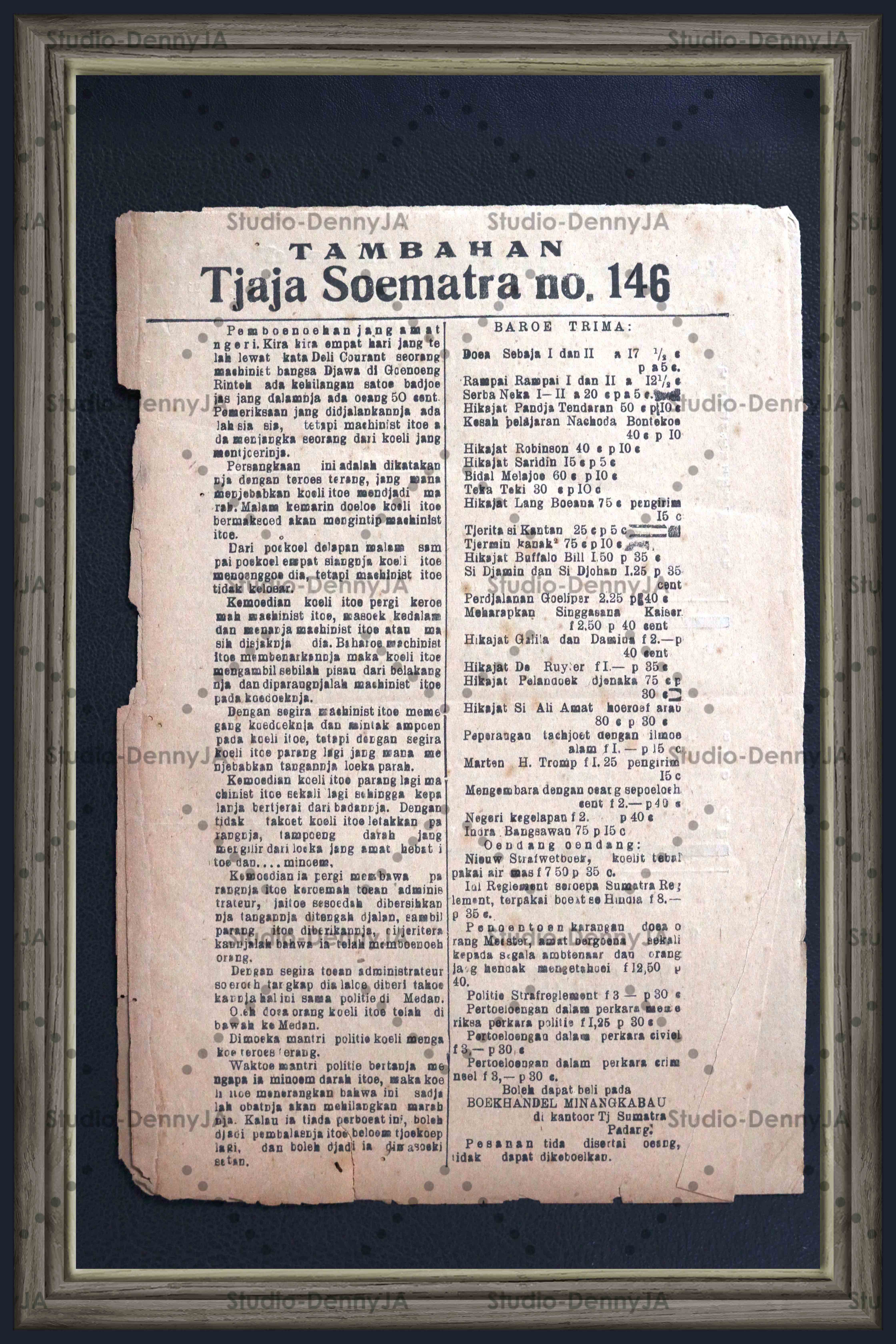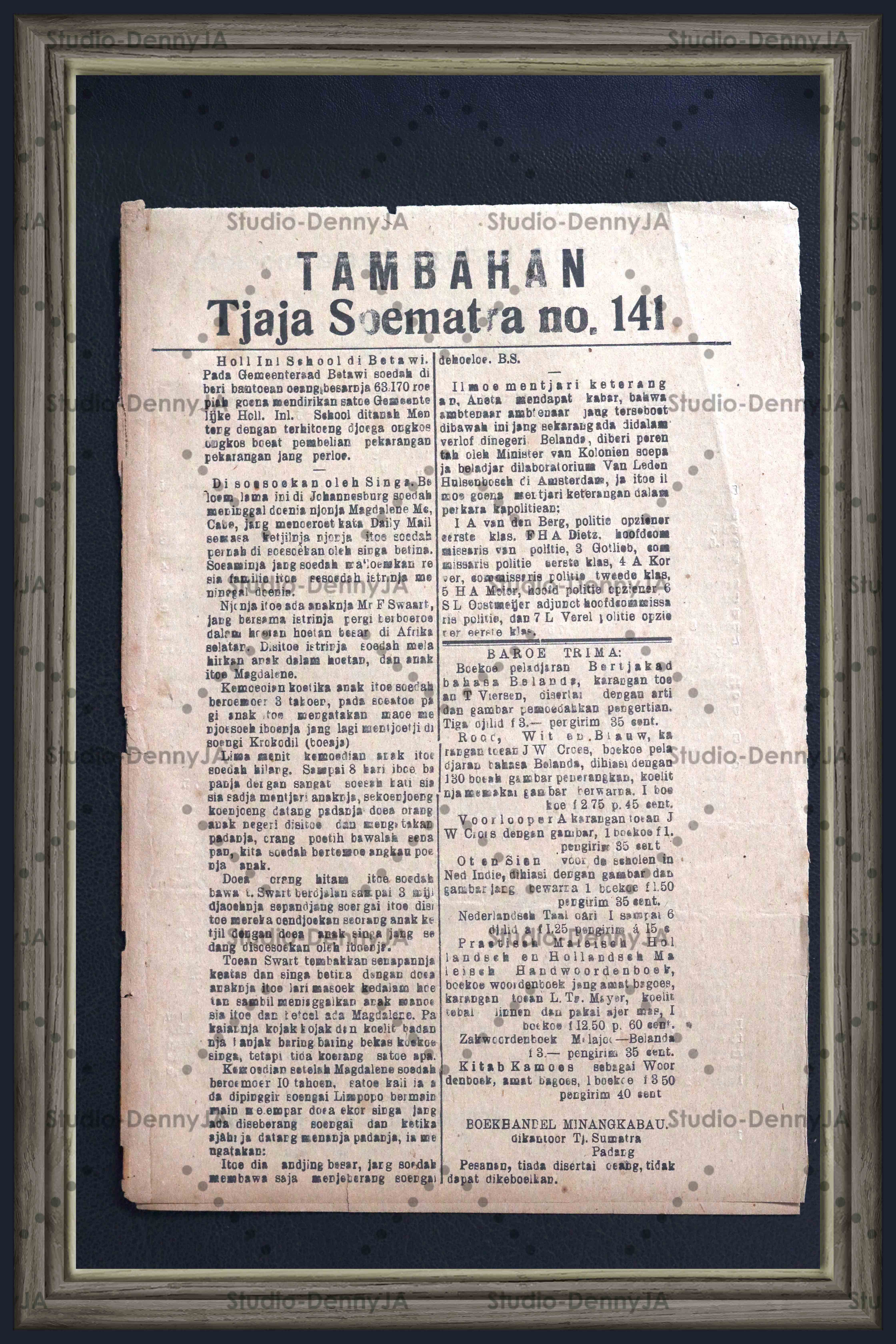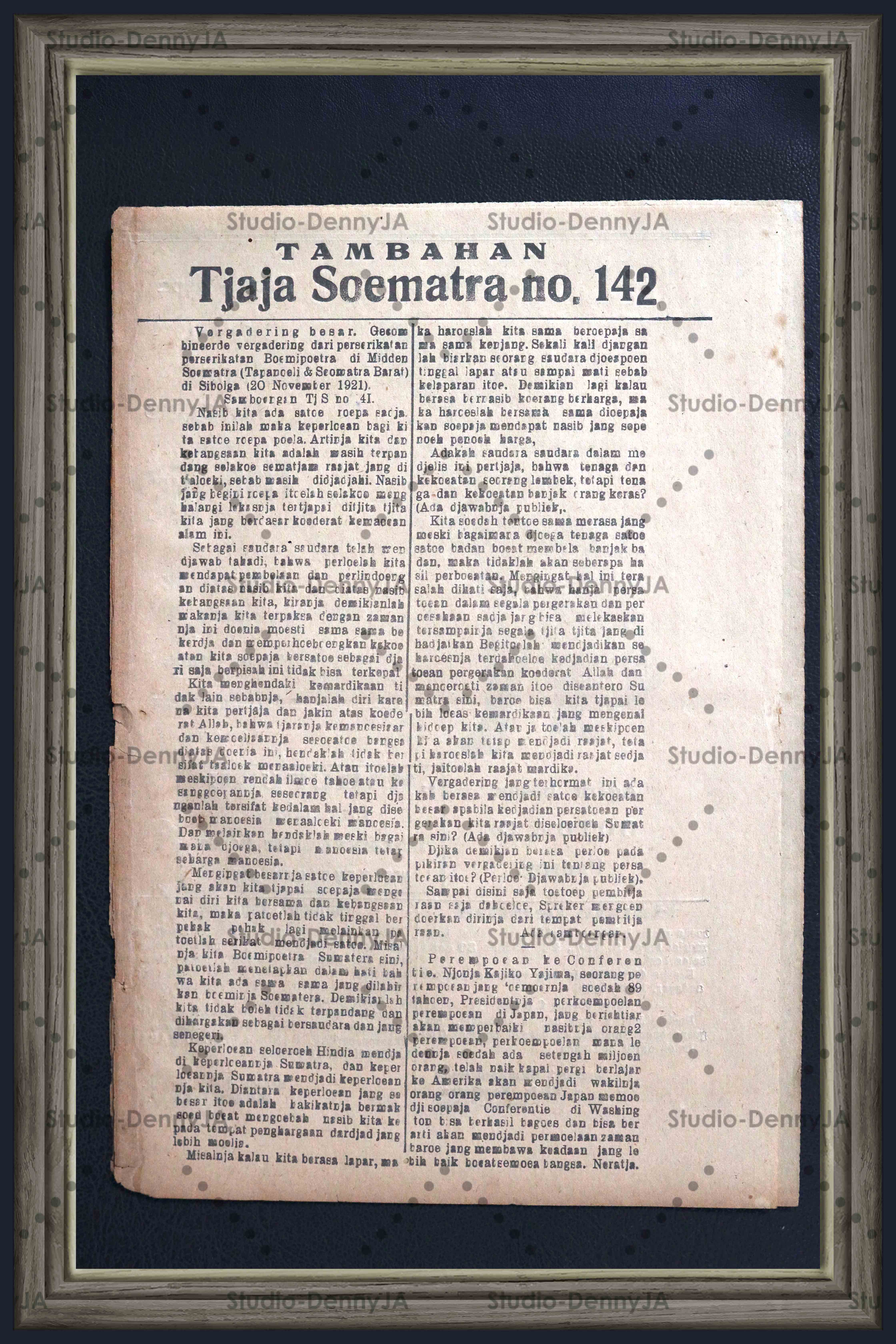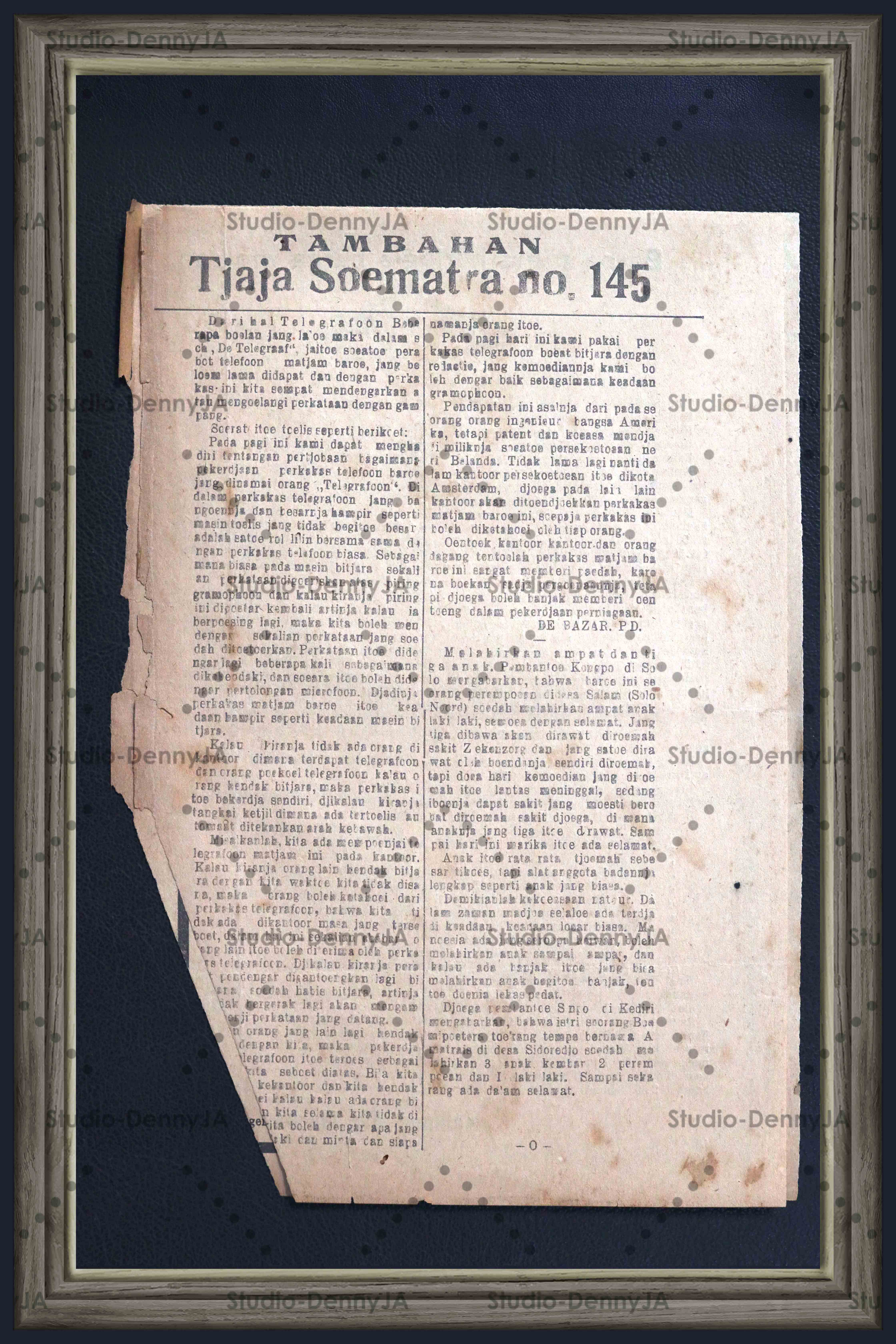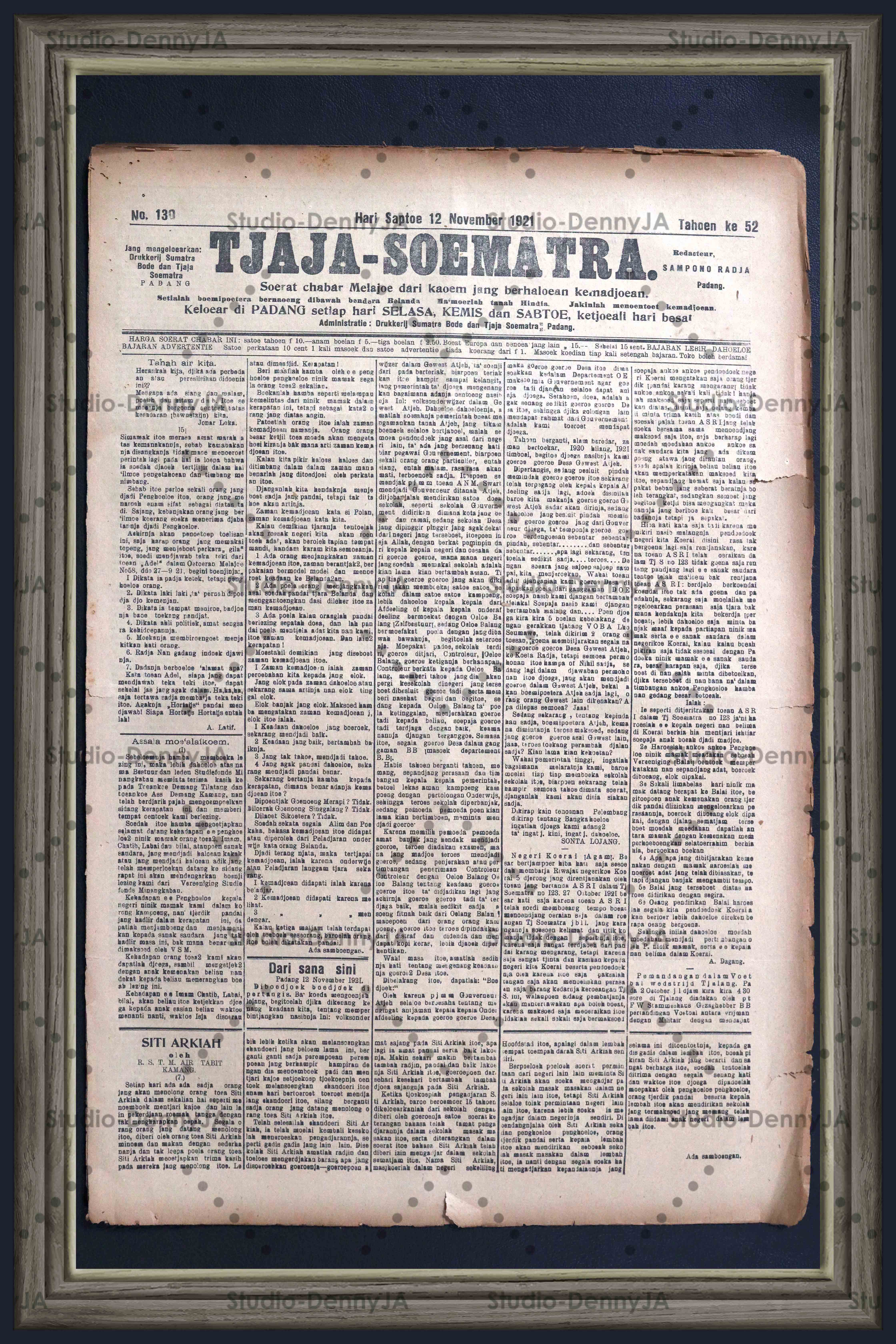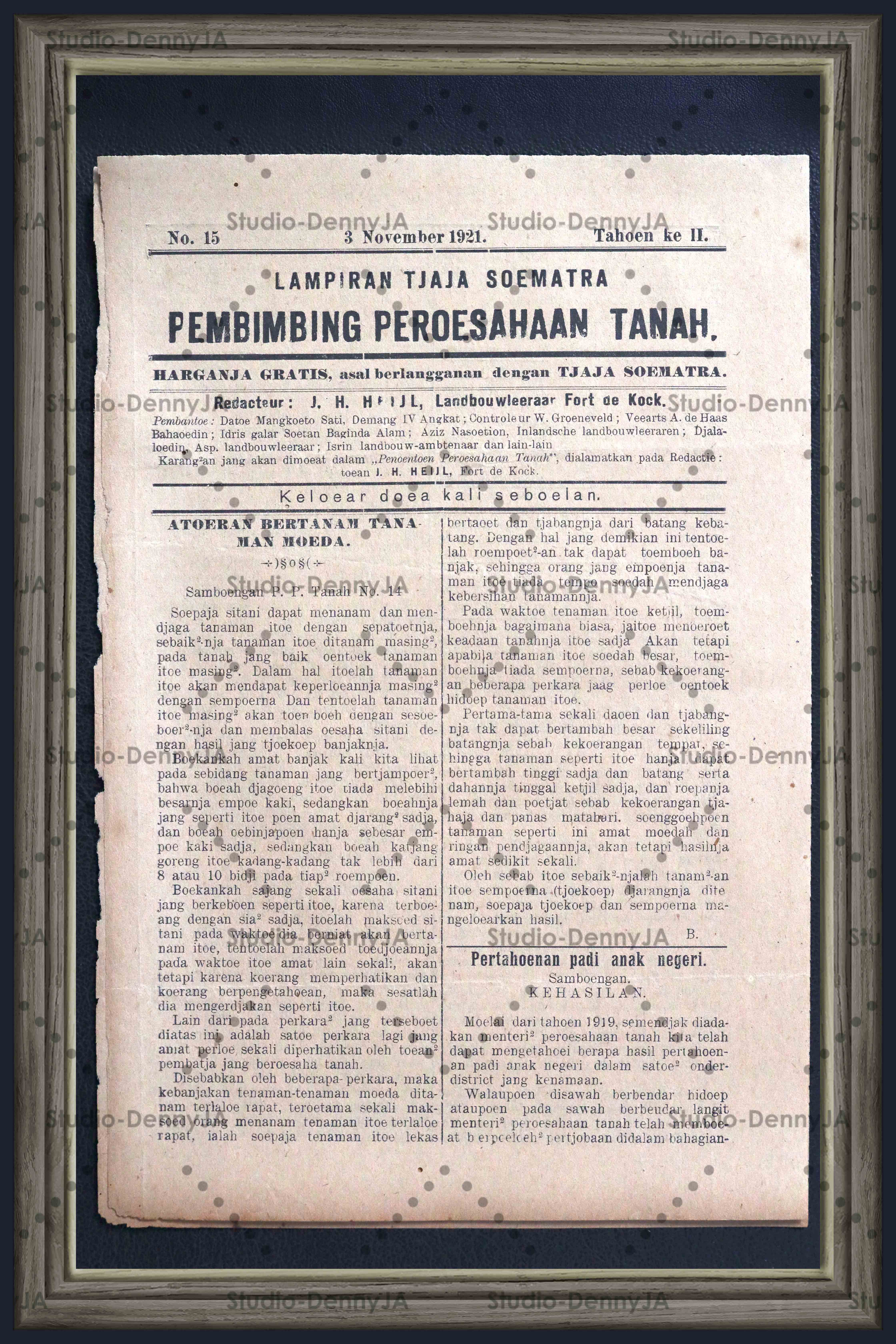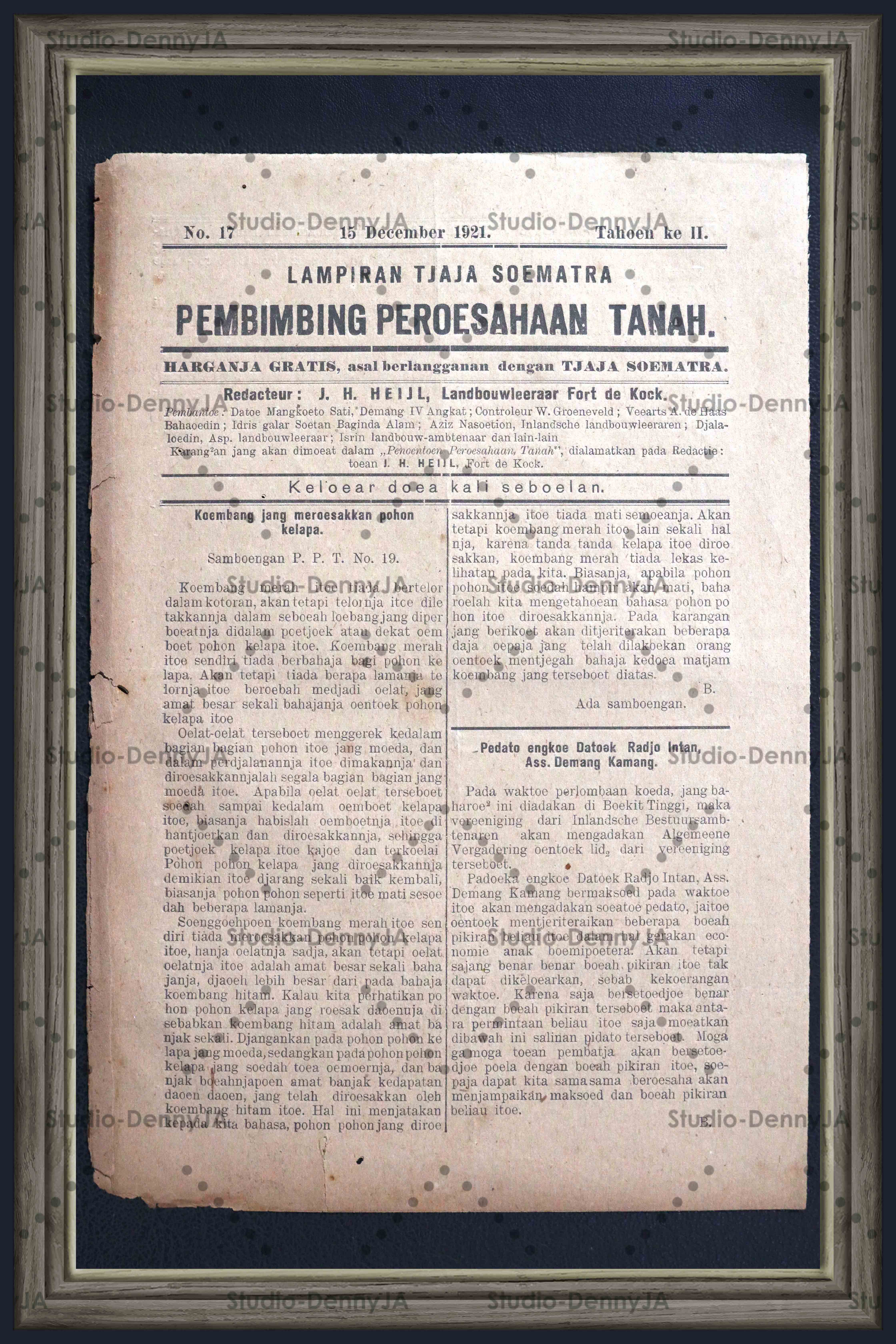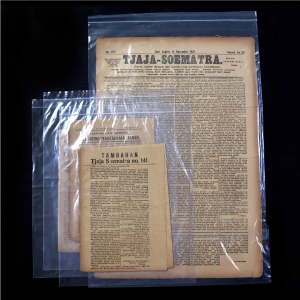
Legendary Newspapers Denny JA Collections
Tjaja Soematra - Padang
by JJ Rizal
By 1900, Tjahaja Soematra was one of five newspapers circulating outside Java. This newspaper was published by P Baumer & Co in Padang in 1897 and published twice a week. One of the journalistic attitudes of Tjahaja Soematra is reflected in the writings of his editor, namely Lim Soen Hin. There, Lim criticized the publication of the first edition of Alam Minangkabau newspaper, the first newspaper in Minangkabau and published in Padang. This newspaper is published every Saturday and is printed by the Naamlooze Vennootschap printery Snelpersdrukkerij “Insulinde” which has published Tapian Na Oeli, Insulinde, and Pertja Barat. Lim was furious because this newspaper prominently used high Malay or literary Malay and used Jawi (Malay-Arabic) letters, thus limiting its readers to only Minangkabau, Mandailing Muslims, and Angkola. The editorial is Middle Eastern oriented and his writings reflect orthodox Islamic tendencies, both from the perspective of the newspaper itself and its readers.
Reacting to the Alam Minangkabau newspaper, Lim wrote:
“Menilik kata-kata dan sedjarahnya, tiadalah akan berapa lama lagi, di kota Padang nanti ada fabriek kata Melajoe dan penjoeloeh mengobah edjaan dalam hoeroef Arab. Begitoelah temasja kemadjoen Alam Minang Kabau: Oelar berikoet sifat Binatang achir zaman!!!” begitu tulis Lim pada 1 April 1904.
("Looking at the words
and their history, it won't be long before in the city of Padang there will be
a Malay word factory and the instructor will change the spelling in Arabic.
That's how the Minangkabau Nature progress tour: snakes and animal traits at
the end of the age!!!” so wrote Lim on April 1, 1904.)
Lim is a peranakan Chinese from Padang Sidempuan who started his career in the last decade of the 19th century as editor of Tjahaja Soematra under Datoek Soetan Maharadja (1858–1921), a pioneer of the national press in Sumatra. Both Datoek Soetan Maharadja and Lim later became involved in a lengthy dispute with Dja Endar Muda, the editor of Alam Minangkabau. Through their comments and editorials, the three men accused each other and undermined the popularity of opposing newspapers. At this point, the problem is no longer Tjahaja Soematra's journalistic attitude, but how the competition among newspapers for market share is fiercer in Sumatra than in Java, because they are published and circulated in the same location. The desire to attract readers often gives rise to disagreements among editors.
Nevertheless, Tjahaja Soematra remains a newspaper that diligently appeals to indigenous leaders and indigenous people to care about progress and the need to pursue progress. Datoek Soetan Maharadja, for example, in Tjahaja Soematra complained about the lack of schools for indigenous children, in response to the writing of Retnodhoemilah of the 13 February 1909 edition.
Datoek Soetan Maharadja's writings became Tjahaja Soematra's journalistic attitude which reflected his newspaper's desire for Sumatrans to pursue modern progress while determined to preserve Minangkabau customs and traditions. The modernization model chosen is based on traditional Minangkabau customs, while using Western education for progress. The newspaper closed in 1933.

